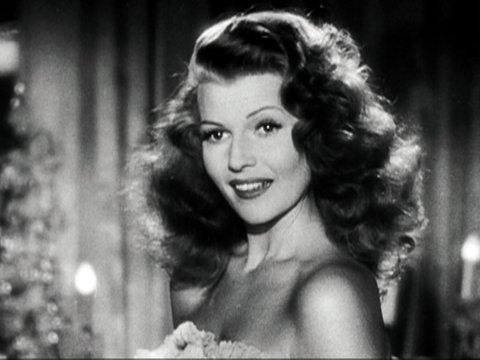The femme fatale: a trope that I love to hate

Rita Hayworth as Gilda in the 1946 film “Gilda” from Columbia Pictures
January 12, 2023
A female spy stalks down a hallway, applying a fresh coat of lipstick after a successful mission. She’s seduced the main character and taken down several assassins, without so much as a hair out of place. She’s beautiful, charming, and level headed. She’s also the downfall of any man she meets. This is the femme fatale.
If you’ve consumed any type of media, chances are you are familiar with the femme fatale trope. Oxford dictionary defines the femme fatale as “an attractive and seductive woman, especially one who is likely to cause distress or disaster to a man who becomes involved with her.” Consider characters like Catwoman, Catherine Tramell, or Amy Dunne. Simply put, a femme fatale is a woman who is comfortable in her femininity and sexuality, and uses it to her advantage.
The femme fatale archetype can be traced back to ancient times. Goddesses and mythical women like Ishtar, Circe, and Eve are infamous for using their sexuality to ruin the lives of men or even humanity as a whole. The message is as clear as it is long-lasting: a woman who is comfortable in her own skin is a dangerous weapon.
Through the years, the femme fatale has become synonymous with the crime and mystery genre, from books like “The Big Sleep” by Raymond Chandler and films like “Basic Instinct.” This overlap is no coincidence; the mysterious woman is often a spy or a vigilante, again using sexuality as her main weapon.
Proponents of this trope would argue its progressiveness: a strong female character who uses her objectification to her advantage, effectively turning misogyny on its head. In a society that keeps women subservient slaves to their looks and sexuality, what could possibly be more feminist than a woman prospering under this system and effectively hurting her oppressors in the process?
On the other hand, some claim the femme fatale actively plays into the male gaze. The biggest blight to their “feminist” femme fatale narrative is the outcome these characters often face. A femme fatale can never maintain her personality and lifestyle. She must either be “tamed” by the male protagonist, or punished for her actions. In summary, she either transforms into a model housewife or rots (either literally or behind bars). Both of these outcomes solidify the notion that female confidence is something that needs reformed.
Here is where my feelings on the archetype come in: I’m conflicted. The femme fatale is a double-edged sword in my opinion, and how well it works depends on its execution. This trope can be taken as either a feminist reclaiming of sexuality, or a shameful weaponization of it. To clarify, a character does not have to be a perfect feminist model to be good. Female characters can, and should, be complex and flawed. But the cardboard cutout of women being either pure matriarchs or devious vixens is outdated and inaccurate.
The portrayal of women and the female experience in media has long been a reflection of society’s attitudes. Through the years, tropes have shifted. Female characters have, and will, continue to be represented problematically. Perhaps dissecting the archetypes these characters embody will make a change, both in entertainment and reality.

